
Having watched anime for the longer part of my life and growing up with it, I found it frankly nearly impossible to choose only top five out of all anime I have seen and loved—some of them fleetingly, some of them deeply. There are a fair numbers of anime that had been a huge impact in my life; a few that gave me the courage in making personal life-choices, a few that led me to people I treasure even today, another few that began something for me. Even ranking them up is hard to do.
Each one of us has something that we enjoy the most out of anime. For some, it’s the animation. For some others, it’s the experience. For me, it’s mostly the story and characters—most of the anime I fell deeply for has a story or a character that resonates with me (not the main character, usually. For some reason, I could count the number of times I end up making a main character my favorite with one hand). Sometimes it’s the simple slice of life anime like Kimi to Boku or the classic shoujo Miracle Girls, sometimes it’s heavier stuff like Mardock Scramble or Peacemaker Kurogane. Of course, there are the stuff I love for the “sheer fun” aspect of it (gorgeous boys, copious BL hints, amazing seiyuu line-up, or simply beautiful-looking animation) like Star Driver or Starry Sky. This is also probably a reason why I watched quite a wide range of genre, which makes picking out top five even harder.
But here’s the thing: I also grew up in the fandom. A big part of liking anime in my life has always been about fandom, and also part of it is shipping. And while it might seem like a shallow reason in picking out a personal Top 5 list for some people, to me it’s also part of why I enjoy anime a lot, and I’d love to share it with you guys. So rather than Top 5 Anime, this is more the list of the Top 5 Anime that could render me so emotional I cease to be functional and the reason why.
5. Free!
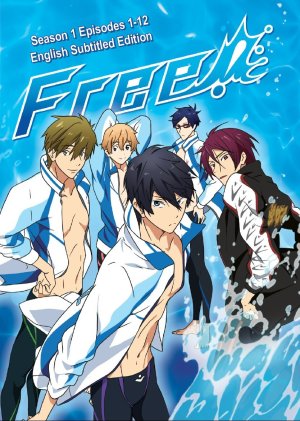
“When will I ever be free of Free!, please let me be free,” is the running joke among the people who fell in love with Free! and are now still deep in the hell hole. Free! is more than just a sports anime about swimming. It offers a story that draws you into loving the characters so much that every time you think you’re over it, the slightest newest thing about Free! Kyoto Animation comes up with could send you to tears thinking, “Damn, I really do love these boys.”
While it’s a lot about swimming and the world through the eyes of Nanase Haruka, Free! is largely about friendships. Sure, the fandom thrives in shipping the boys, but the best point about Free! is the friendship portrayed between the boys. From the on-screen friendships between the Iwatobi boys, between Haruka-Makoto or Haruka-Rin, or between Iwatobi and Samezuka boys, to the off-screen, more in-depth friendships in side materials like Rin-Nagisa or Makoto-Rin—most of them are simple, slice of life stuff that are mostly less dramatic than your usual sports anime, but it hits you in the heart.
4. Fate/Zero
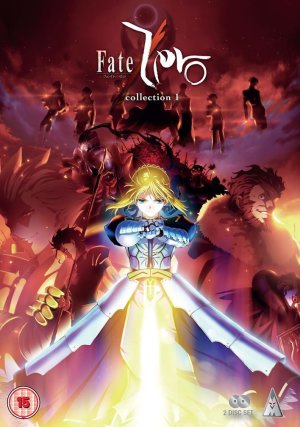
Recommending Fate/Zero to friends is something I rarely do, because while it’s extremely amazing, it makes so much more sense when you either 1) love the Nasu-verse or 2) have seen the old Fate/Stay Night anime years ago, which personally I hadn’t enjoyed. But Fate/Zero was a complete blow to me, going from looking at it skeptically to falling absolutely in love with almost everything in it. Saber in a suit escorting Irisviel everywhere! The Tohsaka family when it was still remotely happy! Tiny Illya! Gorgeous animation and colors and breath-catching battles! Gilgamesh and Diarmuid and Lancelot! Urobuchi’s heartrending writings! Thank you Ufotable!!
Fate/Zero was an amazing ride in almost every aspect. Sure, it’s a prequel, and you know most of the characters are going to die anyway, but the pain was part of why it was good. But what made me really fall in love, what rendered me dysfunctional in the face of the Fate/Grand Order mobile game announcing its current collaboration with Fate/Zero, is Team Rider’s story. Waver Velvet and Iskandar the Great—their Master-Servant relationship that somehow grew into one of loyalty and a King-Vassal relationship, and how Waver learned to find his own worth through Iskandar’s mere presence—to me, it’s their story that shone the brightest, one that for the first time made me wish these two were the main characters. This was what made Fate/Zero most special to me out of all the Fate series.
3. Toward the Terra (Terra E)
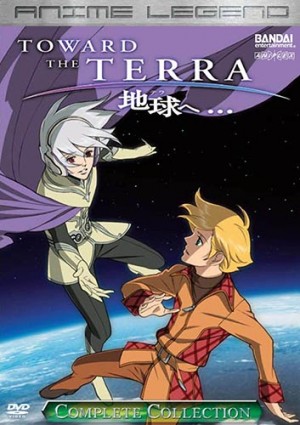
If there was an anime that left me with such profound sense of conclusion and satisfaction, it would be Terra E. My favorite thing about this anime, other than it’s beautiful animation and the excellent seiyuu line-up, is that this anime itself is a journey. A long and complicated one, but at the same time very satisfying in a way you rarely feel when you finished up the anime.
Terra E is about leaders, about race, war, politics, exclusion and perhaps extinction, but more than that, it is a story about coming home. In the dystopian world of Terra E that takes place far in the future where humans have colonized the stars and only a handful of “selected ones” remain on earth, the blue planet becomes a dream for the excluded Mu race—humans with psionic abilities—who are desperately fighting to avoid being hunted into near extinction.
What made Terra E most interesting was that it looked at the dystopian world through the eyes of two main characters who were on the opposite sides of the fight and knew nothing about one another (except at the very end). On one hand, there’s Jomy who’d never wanted to be a Mu, but then was snatched away because he was the Type Blue, or the strongest type, Mu, and was probably the only one who could save his people from extinction. On the other hand, we have Keith, the human raised in a test tube who ended up leading all of humanity, who was the Mu’s most dangerous enemy, but also perhaps the human closest to understanding Mu in the course of the anime. The sense of everything coming together in the end, every thread tied together satisfyingly, is one of the best impressions an anime ever left me, even if it also becomes the anime that made me cry at the very mention of Peter Pan.
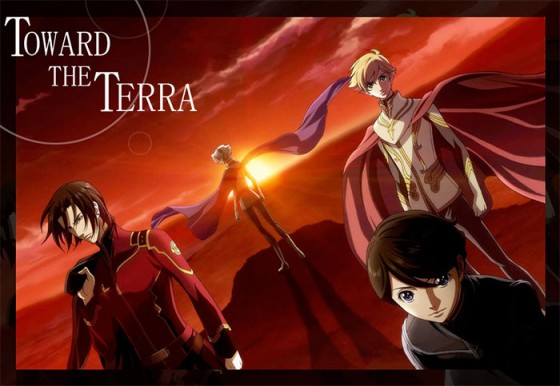
2. The Garden of Words (Kotonoha no Niwa)
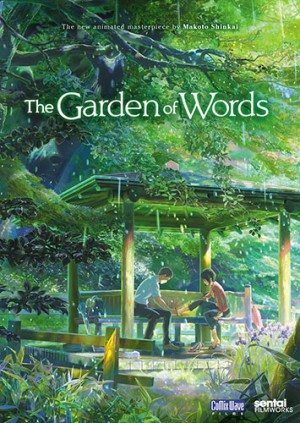
5 CM Per Second might be Shinkai Makoto’s most well-known and loved movie, but as a fan, I would have to say his masterpiece is really Kotonoha no Niwa. Some people would agree, considering its superb animation that would simply take your breath just by looking at it—there have been people finishing the movie without actually knowing what exactly happened because the animation is too good and they can’t concentrate on anything else. But some others would disagree, mostly because the story has a very slow pace and borders on boring to some people, but I would maintain my statement: Kotonoha no Niwa is Shinkai’s masterpiece.
Not only it’s got Shinkai’s gorgeous animation and backgrounds as well as Irino Miyu and Hanazawa Kana’s perfect acting, Kotonoha no Niwa’s storyline deals with a very humane and realistic aspects of human life without making it too painful like 5 CM Per Second did. It is a love story, but it’s more than just a love story. What absolutely destroyed me was the very concept of Akizuki’s dream of being a shoemaker, and how simply aiming for the dream incidentally saved Yukino, who was trying to get back up and learn to walk again in life. It’s a love story, but more than that it’s a story about having a dream and not giving up, all presented beautifully with shoes as a symbol. This is the anime that, once you realize its significance and core story, would be the one you’d rewatch over and over and over again when you’re feeling unsure about life or your future.
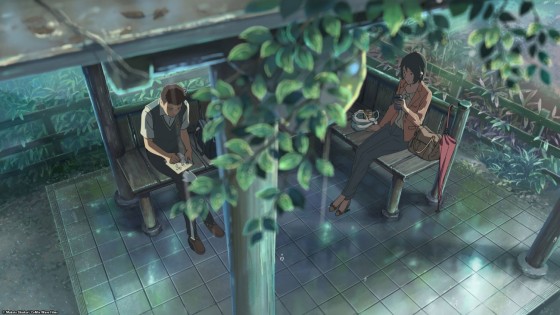
1. Fafner in the Azure (Soukyuu no Fafner)
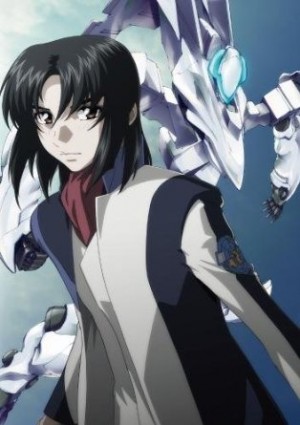
If someone were to ask me what is my favorite anime, Soukyuu no Fafner would be my answer. I love everything about it, so much so, it becomes the only anime that resonates with me on personal levels—the anime has been a great push in making me finish writing my thesis, the fandom has been my home for almost 12 years, one of its line literally becomes my life motto. It’s very personal and this will be a much-biased writing, but still: Soukyuu no Fafner is unbelievably amazing.
As a series going strong after 12 years even with blank periods in between, Fafner started in 2004, ended in a way that made audience griped for a sequel, and then had a prequel, Right of Left OVA, in 2005. Fans were only granted a sequel in the form of a movie almost six years after the TV series ended—Heaven and Earth was released in 2010, and the first announcement for an actual TV series sequel EXODUS followed shortly after, but only came to realization 5 years later in early 2015.
The first thing about Fafner is that it’s a heavily philosophical science-fiction mecha anime, one that perhaps only the writer, Ubukata Tow, understands it perfectly. In the far future, an alien being called Festum came upon Earth and began assimilating humans, taking away even humans’ ability to reproduce. Japan was destroyed, and its survivor, cast off by the rest of humanity, embarked on a man-made island called Tatsumiyajima, where they hid from the rest of the world in peace for years, while constructing the mecha who could fight Festum’s mind-reading abilities: Fafners.
What drew me into Fafner in the first place was its mecha designs, but what made me stay was the highly complicated and yet extremely touching story. What made me absolutely loved it was how Fafner explored its characters as they changed the world, its firm focus on very much existentialist themes such as choices, conversations, collective conscience, existence and nothingness. Everything about Fafner—its characters, animations, mecha, storyline, world-building—is extremely engaging and capable of rendering me into a sobbing mess on the floor.
A lot of people would look down on it and call it another Evangelion rip-off, but in actuality, it’s a very different take on the mecha and science-fiction genre itself. Sure, there’s the alien Festum that humans fight with, but Fafner doesn’t stop at that—it highlights more about how Tatsumiyajima people protects their life, their way of life, how adults protect their children even if it’s their children who put their lives on the line fighting Festum. It’s an anime that flawlessly combines the happiness of daily life and life-and-death battles, that in the end, it becomes the story of ‘living’ despite the many deaths that happened in the series.
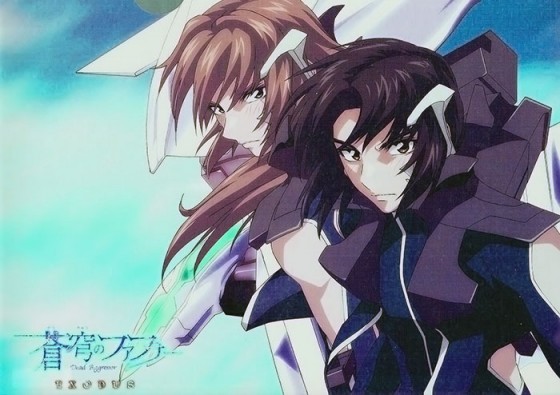
Conclusion
The whole list in this article is, obviously, very much biased. I could have tried being objective and actually chose five best anime I have seen in my life, which would probably include titles such as Hikaru no Go, Kyousougiga, Kara no Kyoukai, Bakemono no Ko, or Gundam 00 (though let’s be real, Soukyuu no Fafner would still get that first place), but then it would not be me throwing out my heart into this post, and there will be no difference between this personal Top 5 Anime and a normal recommendation post.
These five anime have been a great part of my life, and continue to do so. To me, loving anime isn’t only about critically watching or enjoying, but also about what made me fall in love. What I have written was an overview of why I love these series, making this a more personal rather than professionally written post. If you’ve been reading this far, thank you so much, and I hope you’d enjoyed it!

